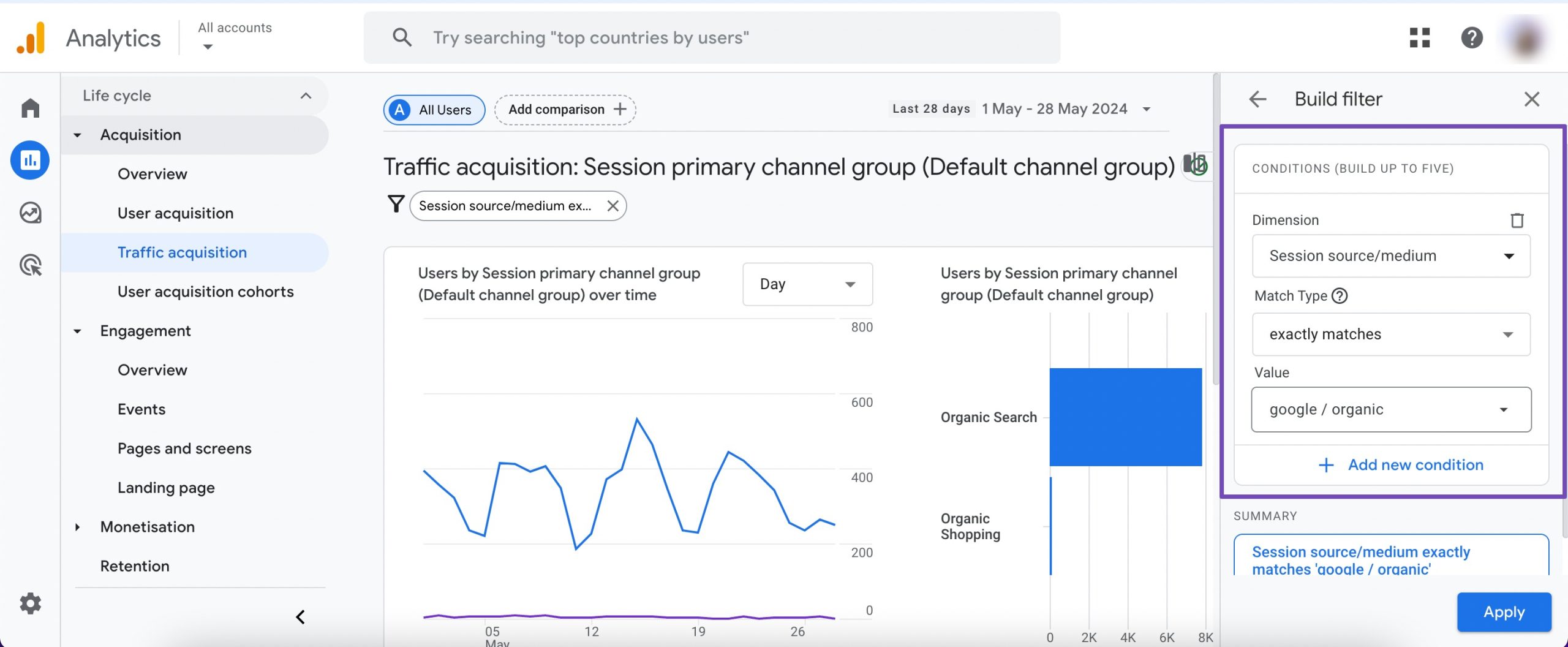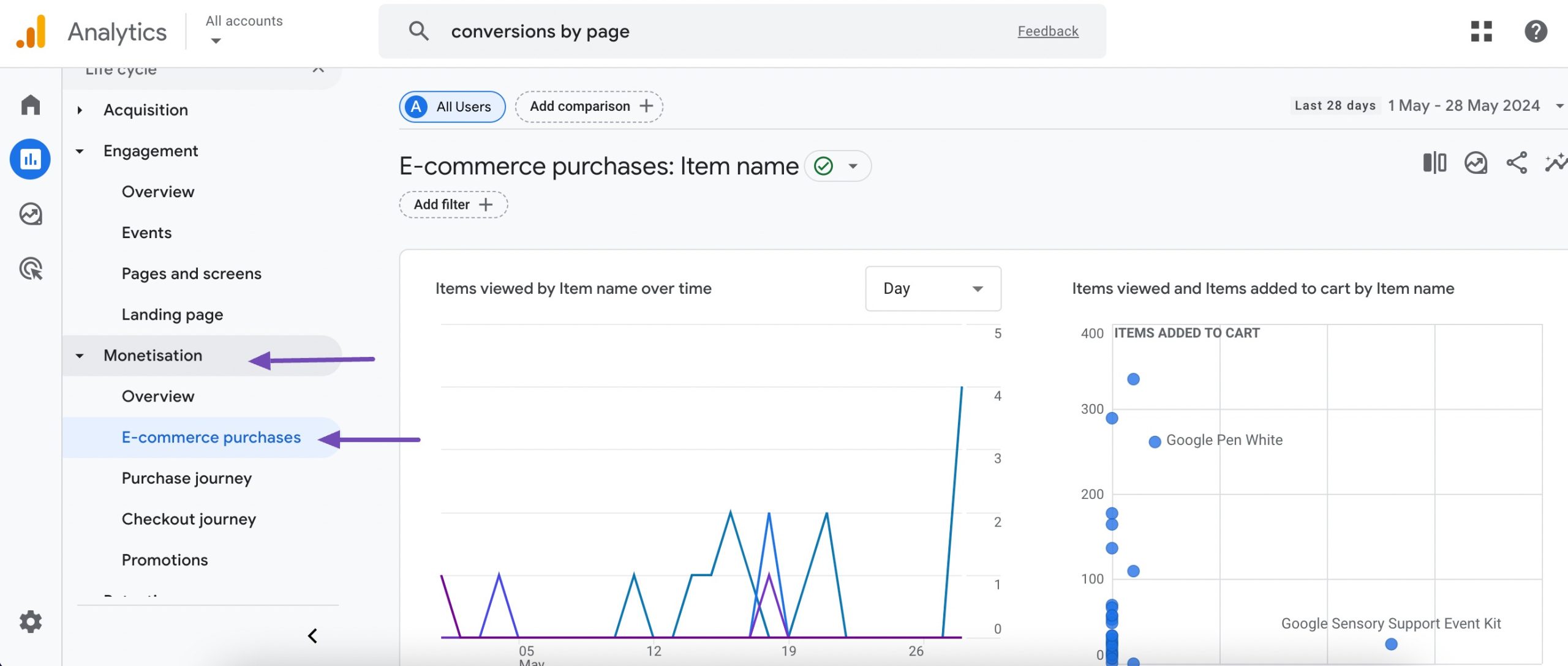Did you know businesses earn an average of $2.75 in revenue for every $1 spent on SEO?
By now, we all are aware that SEO isn’t just a buzzword—it’s an essential investment that can significantly boost your bottom line. However, the real challenge lies in measuring and maximizing the SEO ROI of your efforts.
SEO ROI, or Return on Investment, measures the profitability of your SEO efforts. It’s calculated by comparing the net profit generated from SEO activities to the costs incurred in executing those activities.
In this post, we’ll discuss how to measure and improve SEO ROI. We’ll also discuss the key metrics you need to track, the tools that can help you monitor your performance, and how to measure the SEO ROI.
So, without any further ado, let’s get started.
Table Of Contents
1 What is SEO ROI?
SEO ROI, or Search Engine Optimization Return on Investment, is a metric used to evaluate the profitability and effectiveness of SEO activities.
It measures the revenue generated from SEO efforts relative to the costs incurred in those efforts. Essentially, SEO ROI answers the question: Are the resources spent on SEO bringing in a positive return?
The formula for calculating SEO ROI is:
SEO ROI = (revenue from SEO – cost of SEO investments)/(cost of SEO) *100
Revenue from SEO: The revenue is directly attributable to organic search traffic after subtracting associated costs (like production or service costs).
Cost of SEO: The total expenses related to SEO, which may include salaries, tools, and outsourced services.
For instance, Let’s say a company spends $1,500 on SEO in a month. This includes costs for hiring an SEO expert, subscription fees for SEO tools, and other related expenses.
As a result of these efforts, the company generates $5,000 in revenue from organic search traffic. The net profit will be the revenue minus any additional costs (e.g., production costs), but for simplicity, let’s assume the $5,000 is the net profit.
Using the formula, the SEO ROI will be calculated as follows: SEO ROI = $5,000 – $1,500/$1,500 * 100 = This means that for every dollar spent on SEO, the company earned $2.33 in profit.
2 Importance of Measuring SEO ROI
SEO isn’t going anywhere—but to truly understand its impact, you need to measure its return on investment (ROI). Doing so helps you connect your SEO efforts to real financial results.
Tracking SEO ROI allows you to:
- Justify your SEO investment by showing how your efforts translate into revenue.
- Identify what works—highlighting which strategies deliver the highest returns.
- Allocate resources wisely, focusing on tactics that drive the most value.
- Measure campaign success with clear, data-backed insights.
- Optimize your budget by shifting spending toward what generates the most profit.
For instance, using the Ahrefs Site Explorer tool, we see that Amazon gets around 512 million monthly organic visitors, which can cost $4.6 million in monthly ad spend if it acquired this traffic from paid advertising.

3 How to Measure SEO ROI
Let us now discuss how to measure ROI for SEO.
3.1 Setting Up Goals and KPIs
To measure SEO ROI effectively, start by defining clear business goals.
These goals should align with your overall business objectives and be specific, measurable, achievable, relevant, and time-bound (SMART).
Business goals include increasing website traffic, boosting online sales, improving brand awareness, and enhancing customer engagement.
Identify Key Performance Indicators (KPIs) Aligned with Goals
Once you have defined your business goals, identify the Key Performance Indicators (KPIs) to help you measure progress toward these goals.
SEO KPIs include organic traffic, conversion rates, bounce rates, average session duration, and keyword rankings.
Aligning KPIs with your business goals ensures that you are tracking the right metrics to determine the effectiveness of your SEO efforts.
3.2 Calculating Cost of SEO Efforts
First, you need to calculate the cost of your total investment in SEO.
Add all the costs associated with the channel. Once you’ve compiled these expenses, you can use the total as your investment figure.
In-House vs. Outsourced SEO Costs
When calculating the cost of SEO efforts, consider whether you are handling SEO in-house or outsourcing it. In-house costs include salaries, benefits, and training for your SEO team, while outsourced costs may include agency fees or contractor rates.
Tools and Software Costs
Account for the costs of SEO tools and software subscriptions, such as Ahrefs, Semrush, etc. These tools are essential for effective SEO but can add significant costs to your overall budget.
Refer to our dedicated tutorial on free SEO tools to enhance your SEO performance without breaking the bank.
Time Investment Calculations
Time is an essential factor in SEO cost calculations. Estimate the amount of time your team spends on SEO tasks, such as keyword research, content creation, link building, and performance analysis. Assign a monetary value to this time based on hourly rates to get a complete picture of your SEO investment.
3.3 Track and Analyze Conversions
It’s important to measure the value of each conversion accurately to effectively track and analyze them for SEO ROI.
This step involves using tools like Google Analytics 4 (GA4) to gain insights into your business’s revenue generated from organic search. However, it’s important to note that the type of conversions tracked and the values assigned to them vary depending on your business’s nature.
For ecommerce stores, tracking conversions involves pulling sales data directly from online transactions. This allows you to accurately measure revenue generated from organic search traffic.
With GA4 or a similar tool, you can set up ecommerce tracking to monitor key metrics such as total revenue, conversion rates, and average order value.
Tracking Organic Traffic Conversion Values
To track the organic conversion values, navigate to the Reports section in your GA4 property.
Click on Acquisition → All traffic → Source/Medium. Locate the Organic search row and click on it to segment your traffic data specifically for organic search.

Next, explore the Events tab to view data related to your organic traffic conversions.

Use metrics such as total users, total revenue, etc., to assess the performance of your organic traffic.

Compare conversion performance over time, identify trends, and pinpoint areas for optimization.
Tracking Ecommerce Conversion Values
To begin collecting ecommerce conversion data, integrate ecommerce events into your website using Google Tag Manager (GTM).
Once you’ve initiated tracking, you’ll gain access to an ecommerce report in Google Analytics, which offers comprehensive insights into your transactions.
To access this report, navigate to Reports → Monetization → Ecommerce purchases within Google Analytics, as shown below.

Next, narrow down your focus to organic traffic.
Click on Add filter and select Session source/medium from the drop-down menu under Dimension. Choose google/organic from the options listed under Dimension values. Finally, click on Apply to implement the filter.

Click on the Insights icon at the top right, and the tool will display the total revenue for the selected time frame.

3.4 Understand Assisted Conversions
Assisted conversions are interactions that an audience has with your website leading up to a conversion but are not the final interaction before the conversion takes place.
These touchpoints are important in guiding the audience through their journey and can include various channels such as organic search, social media, email marketing, and paid advertising.
In the context of SEO, assisted conversions highlight the importance of organic search as a contributing factor to conversions, even if it’s not the final channel through which the conversion happens.
In GA4, click Advertising → Attribution → Attribution paths, as shown below.

Choose the conversion event you want to analyze. You’ll see how organic search contributes to different touchpoints in customers’ conversion journeys.
As long as you know the cost and returns, you can calculate your campaign’s SEO ROI using its formula.
4 Challenges of Calculating SEO ROI
Let us now discuss the challenges of calculating SEO ROI.
- Time Lag in Results: SEO is a long-term strategy, and the results are not immediate. It can take several months to see significant changes in organic traffic and conversions due to SEO efforts. This time lag makes it challenging to directly correlate SEO activities with ROI, as the benefits accumulate over an extended period.
- External Factors: Algorithm updates, search engine policy changes, and market trends can impact SEO performance, causing traffic fluctuations and complicating ROI assessment.
- Data Integration: Accurate ROI calculation requires integrating data from multiple sources. Ensuring consistency and accuracy across platforms like Google Analytics and Search Console is challenging.
- Quantifying Non-Revenue Metrics: SEO improves non-revenue metrics like brand awareness and site authority. These indirect benefits are hard to quantify in terms of immediate financial returns.
5 Frequently Asked Questions
How can you optimize your SEO strategy based on ROI data?
Use ROI data to identify high-performing keywords, content, and channels. Allocate resources to the most effective areas, refine your strategies, and test new tactics to improve overall performance and ROI.
How do you measure the long-term impact of SEO?
Measure long-term impact by tracking sustained increases in organic traffic, higher domain authority, and improved site usability over time. These metrics indicate ongoing benefits from SEO efforts.
How do competitor actions affect SEO ROI?
Competitors’ SEO strategies can impact your rankings and organic traffic, influencing your SEO performance. Continuous monitoring and adaptation are necessary to stay competitive and maintain a positive ROI.
Why is continuous monitoring important for SEO ROI?
Continuous monitoring helps identify trends, detect issues early, and adjust strategies promptly, ensuring sustained SEO performance and optimized ROI.
How does content quality affect SEO ROI?
High-quality content attracts more organic traffic, engages users, and leads to higher conversion rates, improving overall SEO ROI.
6 Conclusion
Understanding and measuring SEO ROI is essential if you’re looking to optimize your marketing strategy.
By accurately calculating the return on investment from SEO efforts, you can make informed decisions, allocate resources more effectively, and demonstrate the value of the SEO activities to stakeholders.
SEO ROI provides insights into the effectiveness of your SEO strategies and highlights areas for improvement. Despite the challenges, a comprehensive approach that includes setting clear goals, using the right tools, and continuously monitoring performance can bring significant long-term benefits.
Ultimately, SEO is a long-term investment that, when executed and measured correctly, can drive substantial growth and profitability.
If you like this post, let us know by Tweeting @rankmathseo.
